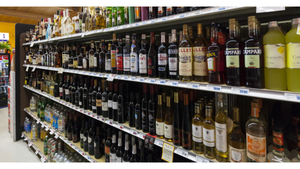NEW COMBI-OVEN STEAMERS SEEN REALLY HOT FOR STORES
DALLAS -- A new generation of combi-oven steamers entering the market holds more potential for supermarket operators involved in hot food service, especially at the store level, since the combis are outfitted with specialized operating modes, worker-safety options and food-safety features, according to an expert on the fixtures."Real estate is at an absolute premium. You have to generate maximum dollar
December 13, 1999
ROBERT VOSBURGH
DALLAS -- A new generation of combi-oven steamers entering the market holds more potential for supermarket operators involved in hot food service, especially at the store level, since the combis are outfitted with specialized operating modes, worker-safety options and food-safety features, according to an expert on the fixtures.
"Real estate is at an absolute premium. You have to generate maximum dollar sales from minimum real estate," said James Whitney, president of Whitney Group, a management consulting firm based in Essex, Vt. "The combi-oven gives you a lot of capability in a relatively small footprint. And, it's adaptable, so as the menus change and the food trends come and go, you're not using specialized equipment that's obsolete next year."
The combi's traditional versatility has been based on its three separate cooking functions: steam, hot air/convection and a combination of both. Now, the units have the capability to store data for Hazard Analysis Critical Control Point programs, and improved lime-control systems that counteract the general decline in water quality, said Whitney.
This union of several functions has led many food professionals to believe that the combi is an omnipotent device that can replace everything in the kitchen. This assumption is false, Whitney said at the biennial convention here of the North American Association of Food Equipment Manufacturers, Chicago.
"There's no easy answer," he said, stressing that no one should rely on any one piece of equipment -- even a combi steamer -- to cook all foods. "I guarantee you that everything in the kitchen breaks. Don't pull everything out of the kitchen, put one appliance in there, and expect it to do all the jobs, all the time, and without any downtime."
Typically, a combi replaces either an oven or a steamer, he said. An operator's decision which to replace depends upon a careful analysis of the menu. In the average supermarket kitchen, where there's a lot of baking and roasting, conventional oven overload can be lightened if a combi is substituted for a steamer, according to Whitney.
"Steamed items typically don't take long to cook, so I can pull out the steamer, put a combi in there, and now, I've picked up additional roasting capability -- which is where the combi really excels," said Whitney.
If you're replacing the oven, "make sure you still have adequate [roasting] capacity. It makes no sense to pull a convection oven out, put a combi in there, and to use it the bulk of the time baking chocolate chip cookies," he continued. "It's overkill."
The majority of combis used in the United States today are found in large institutional settings such as correctional facilities, schools and healthcare institutions -- anywhere a large volume of items needs to be cooked or reheated. The nearest supermarket equivalent here might be a central commissary, where items are partially cooked or parbaked and cooled, before being shipped to individual stores, where the food is rethermed.
"You can blanch your vegetables in steam [mode], shock with an ice bath, and hold them cold," said Whitney, until they are needed.
Retailers are specifically using the combi mode for moist products like boil-in-bag items, as well as pre-cooked/pre-sauced ribs and roasts, he added.
"It's great because you want that little bit of carmelization -- you want the sauce set. So, you'll take it out of the Cryovac [bag] and retherm it in the combi," he said.
Even retailers with limited hot-food service can incorporate a combi into their operations. For example, smaller combis in a store can supply items for the buffet, including roast chicken and casserole dishes. Here, the steam function heats (or reheats parbaked) products and doesn't dry them out, while the heating element crisps the outside -- even breaded products like mozzarella sticks, said Whitney.
What works best, and where, depends on getting pre-sale specifications that pinpoint correct size and application, he said. "You're better off putting in multiple small combis than one big one. Make sure the size of the [combi's] cavity corresponds with the batch size, not the total number of meals you're going to do."
Because its mix of heat and steam is very forgiving on food, combis are ideal for settings where skilled labor is scarce. Whitney noted that many of the evolving features on the new generation of combis coming out of production today emphasize safety, such as two-stage handles and evacuation systems that prevent steam burns, and dual-pane glass door panels that remain cool to the touch.
"If you can make the kitchen more comfortable, a safer work environment, you're more likely to keep the people you have," he said.
Labor should be factored in when determining if a combi is worth the investment. In many cases, food-service operators are discovering that technology can replace at least some labor functions, and simplify many others, Whitney said.
"Combis on average take the same product and capacity vs. a convection oven, and typically see savings of 20% to 25%," he said. "So, here, you can get more done with less."
However, the many variables inherent in combi cooking also make adequate staff training essential if retailers are to take full advantage of the technology that combis offer, he warned.
"There are combis out there that were put in 10 years ago that haven't ever been used in combi mode. They're not earning their keep -- not because the oven doesn't do a good job, but because the initial training wasn't there and people never adapted to properly using it," he said.
Whitney urged operators to seek out manufacturers who provide complete training not only from the technical point of view, but also from the culinary side. Combis represent a new way of cooking, and therefore require significant changes in the way kitchen staffers approach a task.
"Combis are not cheap. If you can't get some type of return on the investment, it doesn't make sense," he said.
Used correctly to their maximum abilities, the devices can generate substantial savings through improved yields, since there is no scorching of product that sticks to pans as it does when cooked in conventional ovens. Likewise, the pans and the combi itself are easier to clean, resulting in labor efficiencies.
One area of continuing concern over combi use has been pan size and spacing. According to Whitney, some of the capacities in combis historically have been optimistic, due to their European heritage.
"The standard European pan is just slightly shallower than the American standard, the 2-inch hotel pan," he said. "It means that many combis have had to back off their nominal capacity and you actually only get to use every other rack."
In the near future, manufacturers are developing racking systems for "American pan spacing," where racks stay just slightly farther apart. This will result in "slightly less, but certainly more usable, capacity," he said.
Servicing a combi is becoming easier as well. Whitney said that -- though "combis historically have not had a great service reputation" -- more and more manufacturers are improving technology, taking into account the fact that "Americans don't seem to do the preventive maintenance that European kitchens do."
To that end, he noted, combi makers are offering maintenance programs, as do some certified service agents. Extended warranties may be standard, or may be purchased. In the case of the latter, operators can negotiate the terms and price on bid.
Perhaps one of the most vexing problems -- common to all steam equipment -- is lime control. Whitney said that boiler-based systems are adopting automatic blowdown and self-flushing mechanisms, as well as self-diagnostic and preprogrammed reminder capabilities. Boilerless units are not exempt from the problem, either.
"Some people think, 'no boiler, no [lime] problem.' That's not true," he said. "The lime has to go somewhere."
About the Author
You May Also Like




